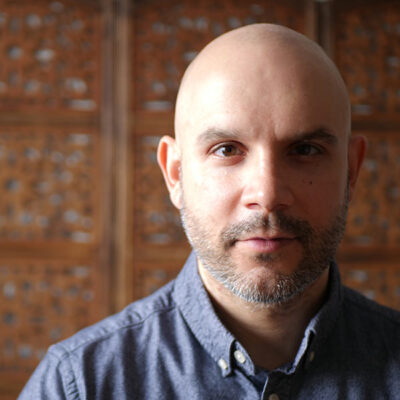7 Tips for Creative Leadership from the 2016 Chicago Cubs
Maybe you feel like your design team is underperforming and in desperate need of a victory. Maybe it’s been a long time since you felt like your compatriots were living up to their potential. Your turnaround can’t be more difficult than it was for the Chicago Cubs.
108 years. That’s how long it had been since the Chicago Cubs won a World Series baseball title, and there was talk that the team was cursed.
In 2016 after years of concentrated effort to turn things around, it appeared briefly that the “Curse of the Billy Goat” might never be lifted, but the Lovable Losers from Chicago jumped back on top and ended up winners. Chicago erupted in a celebration that might still be going on today in some households.
Let’s look at some of the key concepts that took a talented but young Cubs team all the way, and learn a few team management lessons from their squad.
Make the Goal Visual
During Spring Training in February 2016, Cubs’ Coach Joe Maddon laid a line of 111 baseballs on the ground in a team meeting. The baseballs represented wins. The first 100 balls symbolized the one hundred wins which it probably would take to win the division, then the next 11 baseballs stood in for the number of victories to complete the playoff run to the title.
Try to make your design team’s most important goal visual for your team, and put that visual aid somewhere that people can see it and check in with it.
Harvard Business review author Dorie Clark, who teaches at the Duke University Fuqua School of Business, says, “Think about your longer-term (say, three to five-year) plans and make a list of what you’ll need to have in place in order to accomplish them (skills, knowledge, connections, assets, etc.).”
Once you’ve got those goals, lay them out on a visually-pleasing timeline that is easy for everyone to see. If the team can chart the course and check in with their progress, they are more likely to stay on track.
Hire a Juggler
Cubs’ skipper Joe Maddon is notoriously famous for keeping things loose with his team policies. He says he only has two hard rules:
- Run hard to first base.
- Play defense.
For a game like baseball, with 150 years of tradition, that’s uncommon. Take for example, the New York Yankees, who have player curfews on road trips and don’t allow team members to have facial hair.
On the opposite side of the spectrum, Maddon’s dress code for players is “if you think you look hot, wear it.” Most 2016 Cubs’ road trips also had a costume theme for players and coaches alike. It’s hard not to bond with your teammates when you’re all wearing onesies.
One of Maddon’s most clever tactics to keep the team loose on game days was replacing a part of practice by hiring a juggler, magician, or zookeeper with exotic pets to come and entertain the team.
It’s not just fun and games though: There’s scientific evidence that team engagement goes up when the fun factor does.
In Fast Company, David Allen writes about his research on fun in the restaurant industry, “an environment with more than 60% employee turnover annually, and found that workers who socialized more in the workplace and who saw their coworkers and the workplace as more fun were less likely to leave.”
However, all the fun in the world can’t make up for too many losses. Winning is the ultimate fun, and to win, you need to be honest about your weak spots.
Shore Up Your Most Glaring Weakness
Team President of Baseball Operations Theo Epstein took notice of the first half of the Cubs’ season and was ready to make a splashy trade before the July 31 trade deadline. He wanted to make a move to put the Cubs over the top. He knew that the Cubs were sub .500 (12 wins, 15 losses) in close games. He needed to help his team put away the opponent during those close contests.
His solution was to hire a lockdown closer – a pitcher who can come in at the end of the game and be extremely stingy with the baseball. Epstein traded away the Cubs’ number one prospect to get heralded closer Aroldis Chapman from the Yankees, and the gamble paid dividends.
When it comes to dealing with your company’s vulnerabilities, billionaire Ray Dalio recommends that you “figure out concrete ways around your weaknesses. The most common way is to partner with or hire people who are strong where you are weak. The success of this solution depends heavily on your ability to accurately recognize your own weaknesses and vet other people’s aptitude for bridging the gap.”
Dalio offers a number of tools on his app, Principles, to do honest self-assessments about your squad’s strengths and weaknesses.
Once you’re functioning on all cylinders, the next step is to increase efficiency. One way to do that is to cut down on time-wasting activities.
Abolish Pointless Meetings
Joe Maddon claims to only hold 3 all-hands team meeting per season.
He says, “97% of team meetings aren’t necessary. I think a lot of it is for the show. A lot of times when a manager gets upset like that and has to have a meeting, it’s for his feelings and also to produce the effect to say, ‘I had a meeting, and I got suitably angry because the guys aren’t winning.’ Anytime you blow up on your guys publicly, I think it’s to protect yourself. I refuse to do that.”
“I prefer meetings by players, among each other. I prefer that. I like when players to talk to one another more than when coaches address them … I think if there’s an issue when it comes to players talking amongst each other I think it’s more impactful.”
Author Matthew E. May says, “Take a forensic look at your last meeting and ask yourself a few questions: Did it add value for everyone, or was it mostly arm-waving (i.e. overproduction)? Was there a focus on a critical issue, or did we simply brush the surface of too many subjects (i.e. overprocessing)? Did we start and stop precisely on time, or were we waiting?”
Once you can cut out all of the pointless meetings, the next step is to start encouraging an environment where the team members meet on their own as needed to hold each other accountable.
Peer accountability doesn’t happen overnight, however, and you’ve got to build it into the culture. Let’s look at how the Chicago Cubs were able to construct that kind of environment.
Peer Accountability is the Best Kind
Cubs’ catcher David Ross, one of the team veterans, was known for his ability to hold others accountable without hurting the relationship. Ross relates in his book, Teammate, that the key was building enough trust early on. When the going got tough later, he was more easily able to have difficult conversations with teammates. That mutual trust assured the teammate that Ross had his best (and the team’s) interest in mind.
Without that peer-to-peer trust, complaints get pushed up the ladder – if at all. If teammates can’t talk openly to one another, oftentimes wounds fester.
Harvard Business Review’s Joseph Grenny says, “We’ve found that you can approximate the health of a relationship, a team and an organization by measuring the average lag time between identifying and discussing problems. The shorter the lag time, the faster problems get solved and the more the resolution enhances relationships. The longer the lag, the more room there is for mistrust, dysfunction, and more tangible costs to mount. The role of a leader is to shrink this gap. And the best way to do it is by developing a culture of universal accountability.”
Find ways to build trust with your team by letting them know that you care about them. Simply having a non-work conversation every once in a while is enough to let a colleague know that you value them as a human being. That trust is likely to proliferate if it comes from the top.
Accountability rests on the foundation of trust, so once we’ve built a trust culture and cultivated teammates we trust, we need to remember to reward individuals for that trustworthiness.
Sponsor Each Other
It’s no surprise that a number of players on the Cubs nucleus had played together on prior successful teams: David Ross had played with Jon Lester in Boston, and Jason Heyward in Atlanta. Perhaps even more importantly, he made an impression on and had been previously hired by Cubs President of Baseball Operations Theo Epstein in Boston.
Even though Ross was a veteran near retirement and a backup player at best, Lester and Epstein knew that his intangible qualities far outweighed any area in which he was lacking physically as a hitter. They both went out of their way to make sure that David Ross would be a part of the Chicago Cubs championship run.
Lester went so far, after signing his multi-year contract with the Cubs, to take Epstein out for drinks and get Ross on a drunken phone call trying to hammer out contract details after midnight. Although Ross’s agent wasn’t too happy about that, the deal was done quickly the following day. It was clear how many sponsors Ross had in Chicago.
Lara Hogan writes in her book Resilient Management, “When someone has a sponsor, they are way more likely to have access to career-launching work…They’re also more likely to take actions that lead to even more growth and opportunities…”
Hogan suggests sponsoring your employees by:
• “giving visible/public recognition (company “shout outs,” having them present a project demo, thanking them in a launch email, giving someone’s manager feedback about their good work);
• assigning stretch tasks and projects that are just beyond their current skill set, to help them grow and have supporting evidence for a future promotion; or
• opening the door for them to write blog posts, give company or conference talks, or contribute open-source work.”
A Winning Culture Takes Time
Theo Epstein signed with the Cubs as the team’s President in 2011 with the singular mission to take the team to the World Series. Cubs’ ownership promised him nearly unlimited resources to accomplish that end, and the team still didn’t end up winning it all until 2016, five years later.
Don’t get frustrated if there are hiccups in the road to victory, just keep pouring your energy and passion into winning principles. Stay patient, and eventually you’re bound to hoist the trophy.





